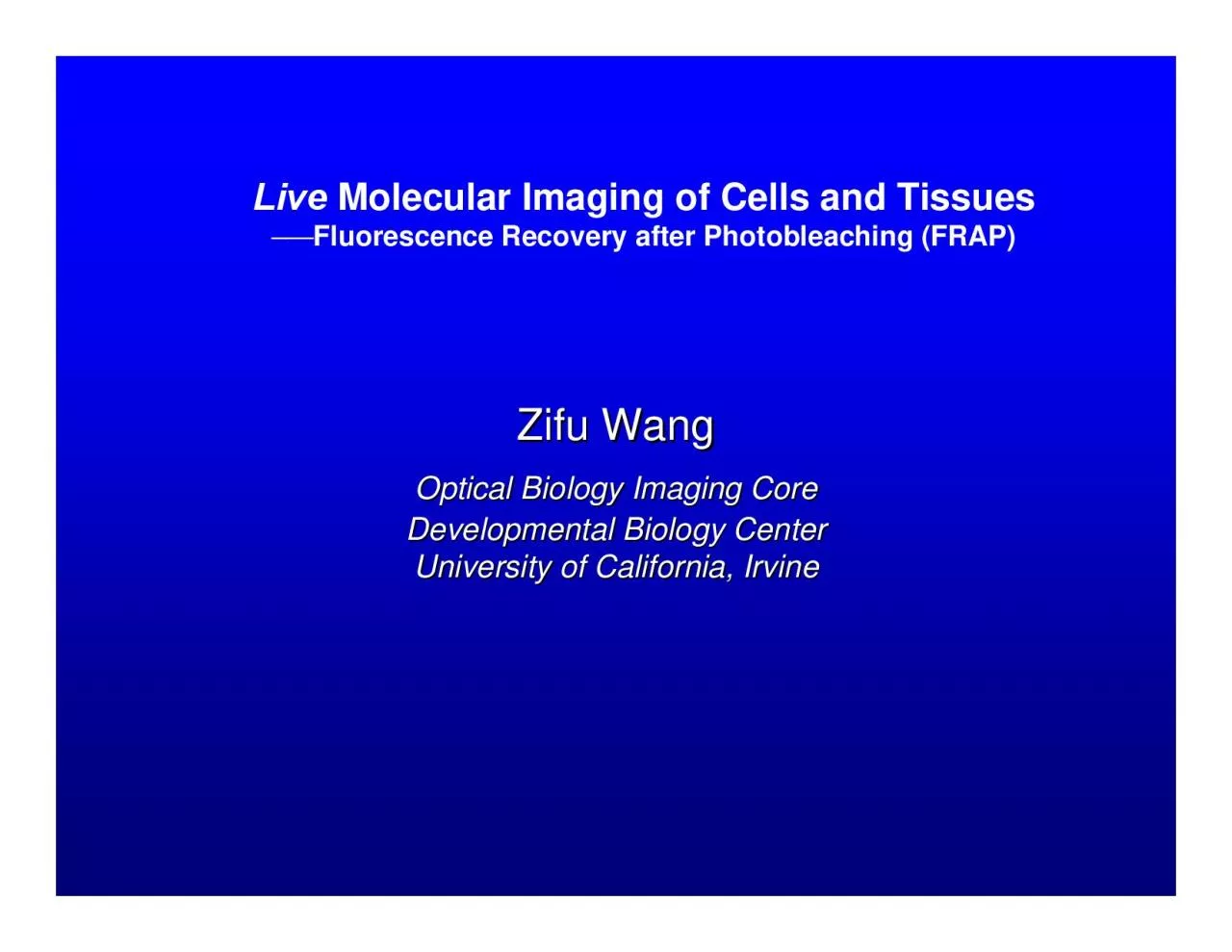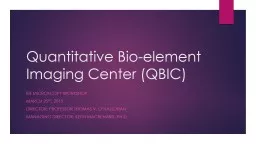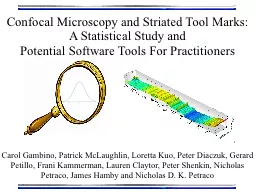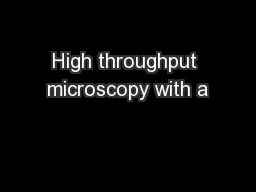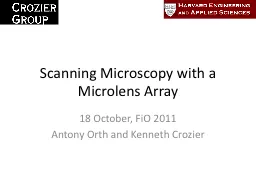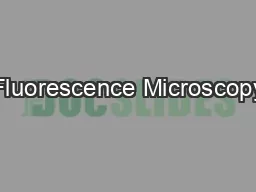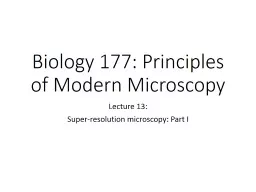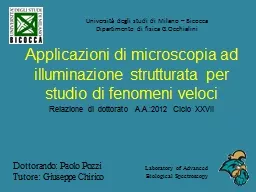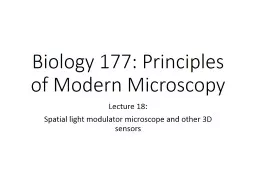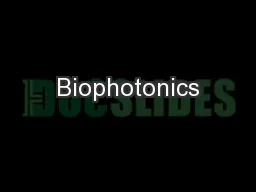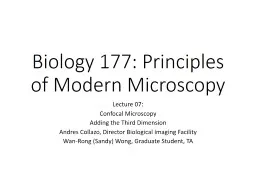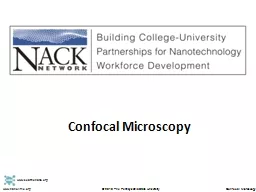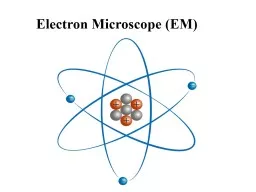PDF-Why Live Imaging?1.Confocal and Multi-photon Fluorescence Microscopy 2
Author : edolie | Published Date : 2021-03-17
httpwwwglassbottomdishescom Medium aging where fluorescent molecules are Information regarding protein mobilitymeasuring the rate of fluorescenc Why Does Fluorescence
Presentation Embed Code
Download Presentation
Download Presentation The PPT/PDF document "Why Live Imaging?1.Confocal and Multi-ph..." is the property of its rightful owner. Permission is granted to download and print the materials on this website for personal, non-commercial use only, and to display it on your personal computer provided you do not modify the materials and that you retain all copyright notices contained in the materials. By downloading content from our website, you accept the terms of this agreement.
Why Live Imaging?1.Confocal and Multi-photon Fluorescence Microscopy 2: Transcript
Download Rules Of Document
"Why Live Imaging?1.Confocal and Multi-photon Fluorescence Microscopy 2"The content belongs to its owner. You may download and print it for personal use, without modification, and keep all copyright notices. By downloading, you agree to these terms.
Related Documents

